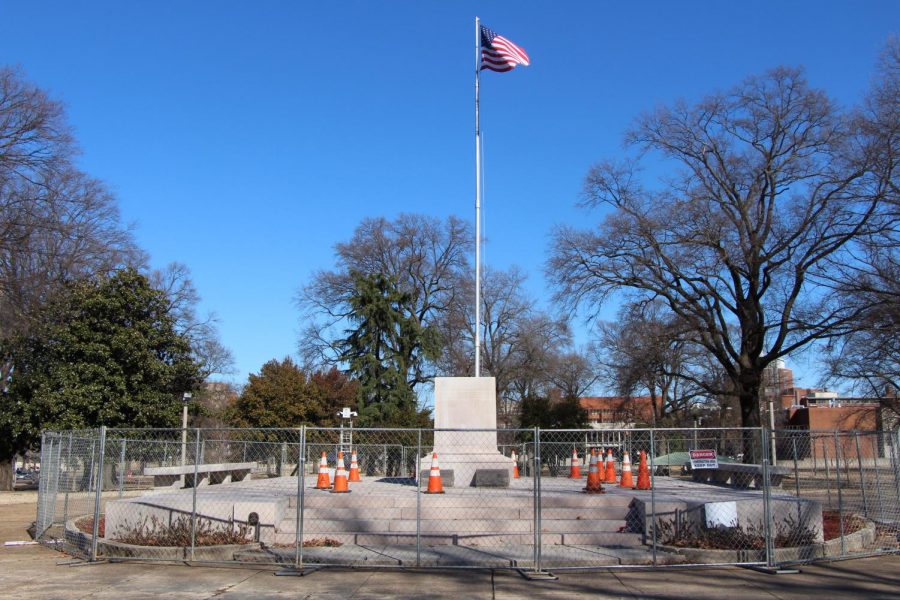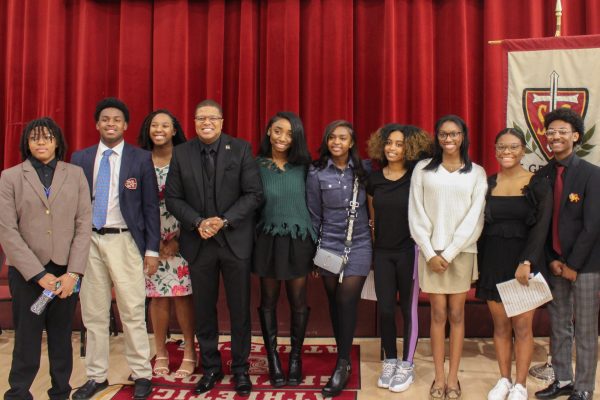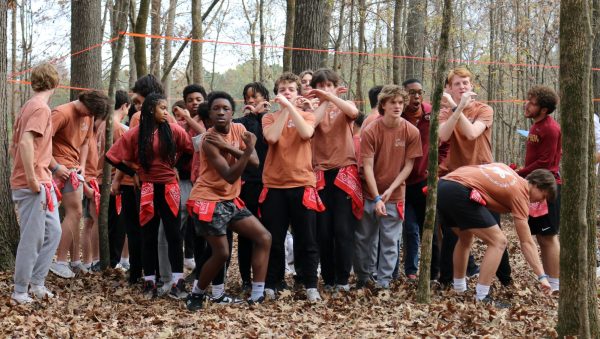A controversial solution
City of Memphis finds a way to remove Confederate statues
Wednesday, Dec. 20 proved to be a historic day for the city of Memphis.
Onlookers watched as crews removed two monuments between 9:00 p.m. and 10:30 p.m, one of Nathan Bedford Forrest, a prominent Civil War general, a slave trader and the Ku Klux Klan’s first “Grand Wizard,” and the other of Jefferson Davis, the president of the former Confederate States of America. The statues’ removals were possible after the city of Memphis sold Health Sciences Park and Fourth Bluff Park to Memphis Greenspace Inc., a nonprofit, for $1,000 each.
The operation was planned for months, as the city struggled to devise a legal method to remove the statues in light of opposition by the Tennessee Historical Commission.
The statues have been a source of controversy in the city for decades and support for their removal has been gaining momentum since the deadly “Unite the Right” rally in Charlottesville, Va. last year.
As The Lodge reported in November, Memphis’s Confederate monuments were not constructed directly after the Civil War but instead at times of controversy over civil rights for African Americans. During the early 1900s when the Forrest statue was erected, Jim Crow laws established in the wake of Plessy v. Ferguson significantly restricted the rights of African Americans and instilled a widespread fear due to lynchings. The Davis statue was installed during the Civil Rights era and three months after the Civil Rights Act was passed.
Opponents of the statues argued that their true purpose was to intimidate African Americans from pursuing greater freedoms. Memphis City Councilman Martavius Jones was one of many who made remarks about the matter.
“I think you have to look at things from a historical perspective and look at what was going on with Nathan Bedford Forrest here in Memphis and Jefferson Davis with the Jefferson Davis statue in Memphis,” Councilman Jones said. “You have to look at what was taking place at the time and pretty much the only thing we can do is speculate based upon what has been documented in history about what the motives were when people put them up, why they put them up and what they represent.”
The city government had long vied with the Tennessee Historical Commission over the removal of the statues because of the 2013 Tennessee Heritage Protection Act. This law “[prohibited] the removal, relocation, or renaming of a memorial that is, or is located on, public property,” according to the Tennessee Historical Commission’s website.
In 2016, the city council first applied to the Tennessee Historical Commission for a waiver to remove the statues, but it was denied. Following an additional denial in 2017, the council voted unanimously in favor of an ordinance for the immediate removal of the statues. However, without state approval, this could not be done.
Instead, the city took a different approach, selling the Health Sciences Park, home to the Nathan Bedford Forrest statue, and Fourth Bluff Park, home to the Jefferson Davis statue, to Memphis Greenspace Inc., a nonpro t led by Shelby County Commissioner Van Turner. Selling the parks to a private entity enabled the city to bypass the protection act, allowing them to remove the statues.
Mr. Luther Mercer, the non-profit’s treasurer, believes that the group made the best decision for the city in removing the statues from the public sphere.
“As a whole, the city of Memphis applauded the transition, and it was important for the city itself to see this move,” Mr. Mercer said. “Symbols matter and removing symbols that represent things that are not present leaves us to focus on more substantive issues, such as poverty and education. It is a matter of how we hold those things in history, not in honor and not in places of prominence.”
The council’s vote to remove the statues angered some, such as the Sons of Confederate Veterans, who believe that the government circumvented the state law by removing the statues without the consent of the Commission.
“It is a deliberate attempt to avoid the state law, and the city is breaking the law,” Lee Miller, a representative from the local branch of the Sons of Confederate Veterans, said in an interview with WREG-TV.
The Facebook group known as “Confederate 901” rallied in several locations around the city after the statues’ removal. A small group was led by white nationalist Mr. Billy Roper, who demonstrated near Health Science Park. Others traveled from Mississippi, waving Confederate flags while driving in their vehicles. There were no reports of violence or deaths.
Mayor Jim Strickland, who was a fierce proponent for the immediate removal of the statues, signed the agreement with Memphis Greenspace on Dec. 15, pending approval by the council the following Tuesday. Removing the statues was especially a goal of Strickland before the city commemorates the 50th anniversary of Martin Luther King Jr.’s death in Memphis.
“This is an important moment in the life of our city,” Mayor Strickland wrote in a public letter on Facebook. “People from all walks of life came together to make [this] a reality. [That day] showed us just how successful we can be when that happens.”
The removal of the statues was a victory for grassroots movements, including Tami Sawyer’s activist group called “Take ‘Em Down 901.” The group coordinated demonstrations and protests in the months leading up to the removal using their social media hashtag #TakeEmDown901 and protested outside FedExForum in black clothes, holding signs and staging “die-ins,” where they laid on the plaza pavement. Sawyer and others, along with the city government, traveled to Athens, Ga. and spoke with the Tennessee Historical Commission.
“It makes me glad that representation has changed. We are no longer living under structures that are hateful,” Sawyer said. “I think the removal is going to show that people have the power to organize and bring the issues that they care about to the forefront.”
University of Memphis History Professor Aram Goudsouzian agreed that the removal holds a symbolic meaning for the city and is a sign of progress.
“It is a signal that the city understands that it cannot be trapped by racist symbols of the past, and it creates a more progressive and modern image for the city, which can attract more talented people and entrepreneurial ventures to Memphis,” Professor Goudsouzian said. “It is also a small recognition that the perspective of our African-American citizens deserves recognition.”
Mr. Mercer believes that the removal of the Confederate monuments shows young people that they have the ability to affect change.
“Hopefully they see that there is activism and action and the ability to come together as a community with a collective body of people that said ‘we are going to work together, and we will make a difference that will affect lives,’” Mr. Mercer said.
Although the removal of both statues was a long time in the making, for the statues’ opponents, it marked a significant cant step for equity and progress for Memphis.
“It is not a cure-all for the city’s problems, of course, but no one ever said it would be,” Professor Goudsouzian said. “It is a necessary step toward any movement for a more just society in Memphis.”












